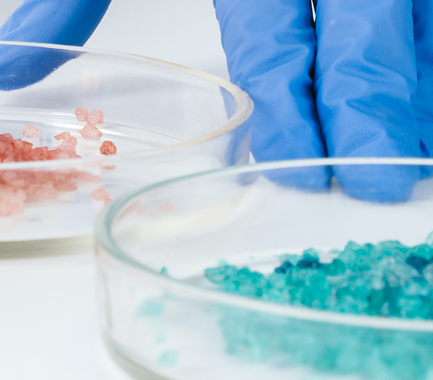Your contact
PENPET-Team - Hamburg

Tim Meister
Sales
Tel. +49 (0) 40 - 675 7 99 40
sales@penpet.de
Get in touch with us.
Pentaerythritol (Penta)
Pentaerythritol (PENTA) is an organic compound from the group of tetrahydric alcohols, which is used in the production of plastics and explosives, among other things. To produce it, the substances acetaldehyde and formaldehyde are condensed in a ratio of 1:3 in the presence of basic compounds and then reduced to pentaerythritol by adding further formaldehyde.
The substance is mainly used for the production of alkyd resins, emulsifiers and plasticizers. In plastics production, pentaerythritol is used as an additive in fire protection. Its esterification with nitric acid produces powerful explosives known as nitropenta and petrine. These can also be used in medicine to dilate blood vessels.
At PENPET you can order the required amount of pentaerythritol (PENTA) in an uncomplicated and sustainable way. We look forward to receiving your inquiry for an individual offer. The solids can be delivered in Big Bags of 500 kg, 750 kg and 1000 kg as well as in sacks of 25 kg. We can also deliver in silo trucks.
CAS no. 115-77-5
EINECS no. 204-104-9
Molecular formula: C5H12O4
Synonyms: 2,2-bis(hydroxymethyl)-1,3-propanediol, pentaerythritol, PENTA
Areas of application: Raw material for the production of plasticizers, emulsifiers, alkyd resins, paints, varnishes and cosmetic products, raw material for the production of explosives
More Information
The name pentaerythritol is based on an analogy to the tetravalent alcoholic substance erythritol, which however has a different structure. The alternative designation 2,2-bis(hydroxymethyl)-1,3-propanediol clarifies the actual structure of the compound. The molecule of pentaerythritol can be described as a hydroxy-terminated propyl structure with two additional methanol residues attached to its central carbon atom. The overall picture results in a symmetrical structure consisting of four methanol groups, which are linked by a central carbon atom to form a regular star structure.
Pentaerythritol therefore has four terminal hydroxy groups distributed in space and tends to react in the typical manner of alcoholic compounds. Processes of esterification together with carboxylic acids are of great importance. Due to the large number of functional groups, the substance can be used in polymer production for the three-dimensional crosslinking of molecular structures.
Small amounts of dipentaerythritol can be produced as a by-product during production. With us you get pentaerythritol in a purity of at least 98%.
Pentaerythritol (PENTA) is a white solid that is commonly processed in the form of a crystalline powder. The compound is odorless but has a sweet taste. Their solubility in water is strongly dependent on temperature. It is only moderately soluble in cold water, but readily soluble in boiling water. Due to their higher density, excess amounts of pentaerythritol settle to the bottom of the vessel in aqueous solution. The compound is not hygroscopic.
Pentaerythritol is also soluble in ethanol, ethylene glycol, glycerol, and formamide. However, the compound is insoluble in other organic solvents such as acetone, diethyl ether, petroleum ether, carbon tetrachloride or benzene. The substance melts at temperatures around 260 °C and already reaches its boiling point at 276 °C, so that it is only in the liquid state in a very narrowly limited temperature range.
Pentaerythritol (PENTA) is chemically stable under normal conditions. However, the compound tends to react violently with strong oxidizing agents. Pentaerythritol is combustible but difficult to ignite. There is a risk of explosion in contact with thiophosphoryl chloride and nitric acid as well as in the raising of fine dust from the compound. Explosive dust-air mixtures can form if handled carelessly. Pentaerythritol should therefore always be stored in an airtight container and kept away from sources of ignition such as sparks, flames, excessive heat and electrostatic discharges during processing. Combustion and thermal decomposition of the substance can produce dangerous levels of noxious gases.
Pentaerythritol (PENTA) is not considered toxic. However, direct contact with compound dusts or solutions may cause eye or respiratory irritation. The substance must be prevented from escaping into the environment and the responsible authorities must be informed in the event of larger quantities. Pentaerythritol (PENTA) is classified as slightly hazardous to water and may be harmful to aquatic organisms. According to the GHS classification, the compound does not represent a hazardous substance and is not subject to any special transport regulations.
